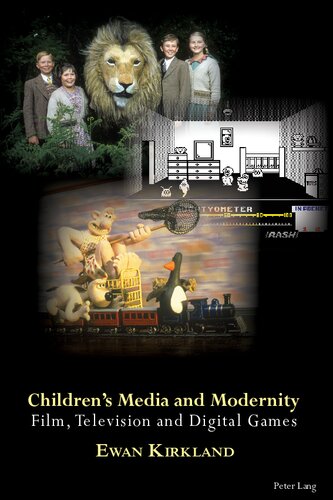

Most ebook files are in PDF format, so you can easily read them using various software such as Foxit Reader or directly on the Google Chrome browser.
Some ebook files are released by publishers in other formats such as .awz, .mobi, .epub, .fb2, etc. You may need to install specific software to read these formats on mobile/PC, such as Calibre.
Please read the tutorial at this link. https://ebooknice.com/page/post?id=faq
We offer FREE conversion to the popular formats you request; however, this may take some time. Therefore, right after payment, please email us, and we will try to provide the service as quickly as possible.
For some exceptional file formats or broken links (if any), please refrain from opening any disputes. Instead, email us first, and we will try to assist within a maximum of 6 hours.
EbookNice Team

Status:
Available0.0
0 reviewsThroughout the modern era the figure of the child has consistently reflected adult concerns about industrialisation, urbanisation, technology, consumerism and capitalism. Children represent a symbolic retreat from modern life, culturally aligned with fairy tales, medievalism, animals and nature. Yet children also embody the future and are often identified with the most contemporary forms of popular culture.
This book explores how products for children navigate such contradictions by investigating the history and textuality of three major forms of modern media: cinema, television and digital games. Case studies – including Wallace and Gromit, Teletubbies, Horrible Histories, Little Big Planet and Disney Infinity – are used to illustrate the complex intersections between children’s culture and modernity.
Cinema – so closely associated with the emergence of modernity and mass popular culture – has had to negotiate its relationship with child audiences and depictions of childhood, often concealing its connection with modernity in the process. In contrast, television’s incorporation into family home-centred, post-war modernity resulted in children being clearly positioned as the audience for this domestic entertainment. The latter decades of the twentieth century saw the promotion of home computers as educational tools for training future generations, capitalising on positive alignments between children and technologies, while digital games’ narrative references, aesthetics and merchandise established the new medium as a form of children’s culture.